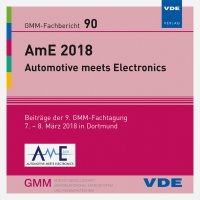Robust Localization on Highways Using Low-Cost GNSS, Front/Rear Mono Camera and Digital Maps
Conference: AmE 2018 – Automotive meets Electronics - 9. GMM-Fachtagung
03/07/2018 - 03/08/2018 at Dortmund, Deutschland
Proceedings: AmE 2018 – Automotive meets Electronics
Pages: 7Language: englishTyp: PDF
Personal VDE Members are entitled to a 10% discount on this title
Authors:
Harr, Maximilian; Mueller, Klaus-Dieter; Hellmund, Andre-Marcel; Wagner, Nikolas (Opel Automobile GmbH, EE Advanced Technology, Active Safety & Controls, Bahnhofsplatz, 65423 Rüsselsheim, Germany)
Abstract:
An essential task for Intelligent Transportation Systems (ITSs) is to obtain precise knowledge of the local environment as well as vehicle system states. Although high precision sensors are capable of completing this task sufficiently, they are mostly too expensive for large-scale vehicle production. Alternatively, system states and local environment perception can be estimated using multiple low-cost sensors together with data fusion techniques. One crucial task of multi-sensor fusion algorithms is the exclusion of erroneous measurements. This paper presents and compares two approaches for robust vehicle localization. The first approach uses an Extended Kalman Filter (EKF) while the second approach uses a Particle Filter (PF). Design requirements for both localization algorithms have been to only use near-series sensor setup. A front and rear monochrome camera as well as low-cost Global Navigation Satellite System (GNSS) receiver serve as positioning sensors. Furthermore, a high-precision map, that has been recorded previously, is used.


